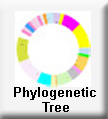


|
Syn.
|
Hoplolaimus menzeli Stefanski, 1924
|
|
Photo Gallery- Govenor Dodge State Park, Wisconsin |
This species included in the Criconematid Project
DNA Sequences Obtained
| Specimen | Collected |
| N-720 | Great Smoky Mts National Park |
| N-721 | Great Smoky Mts National Park |
| N-722 | Great Smoky Mts National Park |
 |
 |
 |